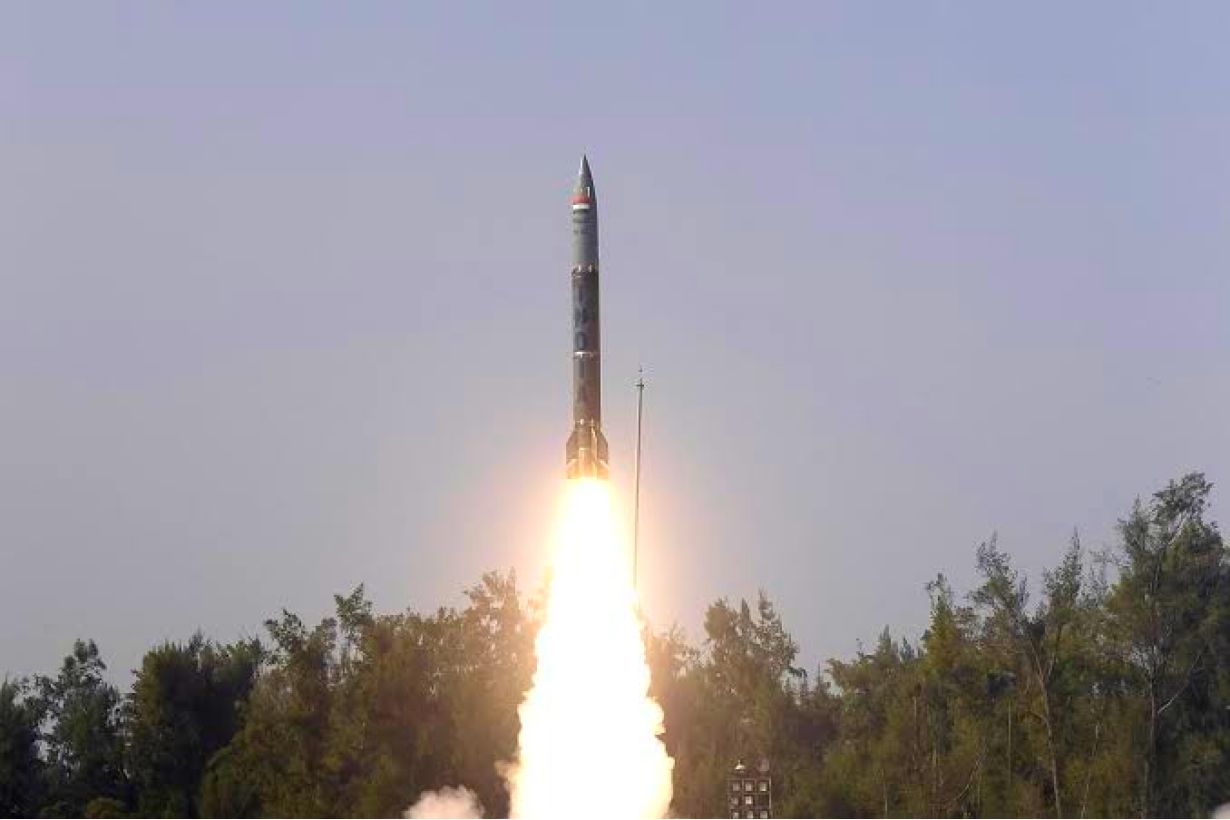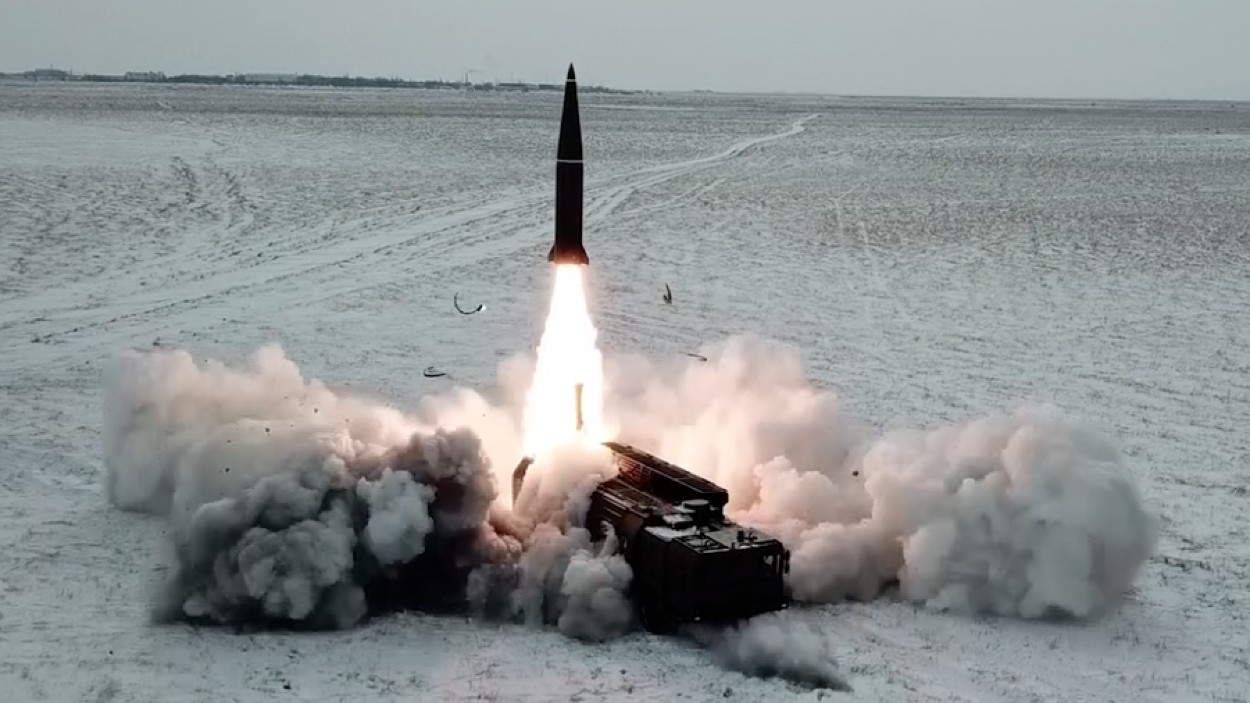The DRDO successfully tested the short-range quasi-ballistic missile Pralay (Holocaust) at 9:50 AM on November 7, 2023, from the Abdul Kalam Island off the Odisha coast.
According to the DRDO, the test achieved all of its mission objectives. The wording used by the DRDO typically suggests a development trial with limited objectives, not an operational test.
The Pralay was last flight tested on December 22, 23, 2021, from Dr APJ Abdul Kalam Island when two missiles in two different payload-range configurations were test launched on consecutive days.
The Pralay missile is reportedly developed from the Prithvi AD (Air Defence) missile of DRDO’s BMD system. The project was sanctioned in March 2015.
Iskander-M Analog
DRDO’s Pralay missile is an analog of Russia’s Iskander-M quasi-ballistic missile, which has acquired a formidable reputation during the course of Russia’s Special Military Operation (SMO) in Ukraine.
The range of the Pralay missile can vary between 150-500 km. With a 500 kg payload, the missile has a range of 400 km, and with a 1000 kg payload, it has a range of 350 km.
Besides similar range and trajectory characteristics, the Pralay and Iskander have similar accuracy of around 10 m CEP (Circular Error Probability). The high accuracy of the two missiles may be attributed to terminal guidance using a seeker.

The Iskander-M uses optical or radio frequency DSMAC (Digital Scene Mapping and correlation) guidance. It’s likely that the Pralay currently uses radio frequency DSMAC only.
The missile is fitted with an indigenously developed Fused Silica Radar-dome (RADOME). The use of an RF transparent radome suggests the missile uses radar imaging for terminal homing.
Terminal Manoeuvring
The Pralay missile features a jet vane system for thrust vector control, suggesting that the missile can perform evasive maneuvers in the terminal phase of flight. It is possible that the Pralay, like the Iskander-M, can also release decoys to frustrate adversary air defense systems.
The missile navigates to its target using inertial guidance. It can be controlled throughout its flight.
Quasi-Ballistic Trajectory
Quasi-ballistic missiles are much more difficult to intercept than ballistic missiles, such as the Prithvi tactical missile that currently equips missile units of the Indian Air Force and the Indian Army.
The flight path of a ballistic missile is predictable, based on its trajectory at the time of rocket motor burnout. A quasi-ballistic missile switches from a ballistic to a flat trajectory following launch.
The switch facilitates maneuver and lowers the radar horizon for adversary radars, thereby delaying detection and making the flight path unpredictable. At long range, if you cannot predict the flight path of a missile, you cannot engage it with an air defense missile.
The combination of high speed, quasi-ballistic trajectory, and terminal maneuvering make the missile near impossible to intercept, as is the case with the Iskander-M.
The Pralay, which is powered by a solid propellant rocket motor, never leaves the atmosphere following a flat trajectory. It weighs 5t, with the propellant weight being nearly 3t.
The missile can feature different types of warheads, including PF (Pre-fragmented), Monolithic PCB (Penetration cum blast), and Submunition PCB.
Mobility
Like the Iskander-M, the Pralay is a land mobile quick reaction missile system. The system comprises a 12×12 launcher with two missiles or an 8×8 launcher with a single missile.
Each launcher is supported by a Battery Command Centre (BCC) vehicle, which also serves as a communication center. The missiles are launched directly from their storage and transportation canisters.
Stealth
The Pralay missile features two sets of small fins to reduce its radar signature.
Acquisition Plans
It’s likely that the spectacular performance of the Russian Iskander-M missile in Ukraine has prompted the MoD and DRDO to accelerate the development and acquisition of the missile.
ANI reported on December 25, 2022, that the MoD has cleared the procurement of around 120 Pralay ballistic missiles for the Indian armed forces.
“A high-level meeting of the Defence Ministry cleared the acquisition of around 120 missiles for the armed forces and their deployment along the borders,” senior defense sources told ANI in New Delhi.
The missile would be first inducted into the Indian Air Force. It’s likely that the Indian Army will also acquire the missile.

Conclusion
Both Indian adversaries, across the LoC and LAC, have capable air defense systems. It will be difficult for India to strike targets deep behind the battlefront using either manned aircraft or cruise missiles.
Russia’s SMO in Ukraine has shown that even stealth cruise missiles face high attrition rates operating in airspace contested by modern AD systems. It’s, therefore, imperative for India to develop and deploy missiles that cannot be intercepted by adversary AD systems.
- Vijainder K Thakur is a retired IAF Jaguar pilot. He is also an author, software architect, entrepreneur, and military analyst. VIEWS PERSONAL
- Follow the author @vkthakur




